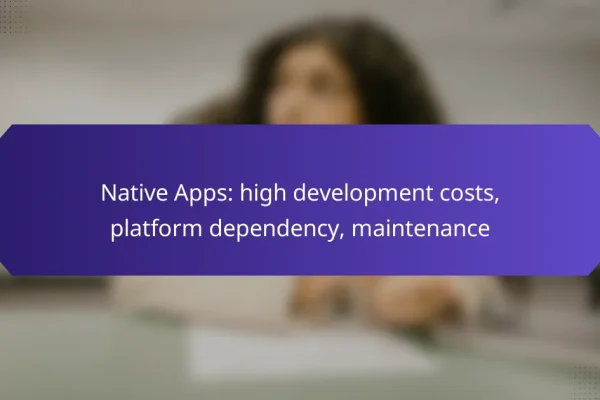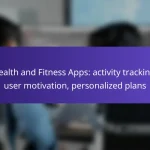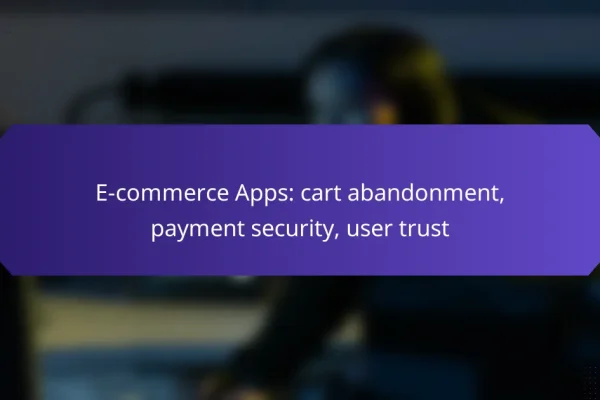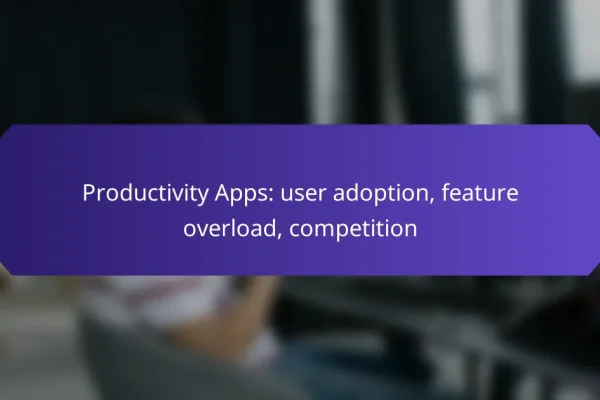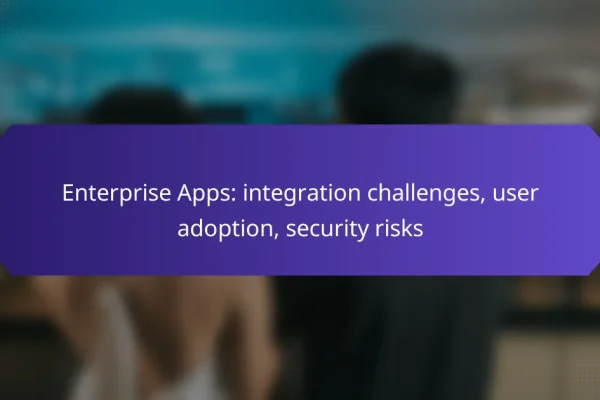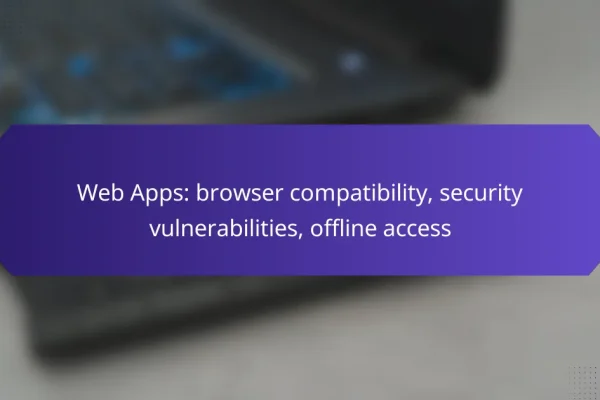What are the risks of native mobile app development in the UK?
Native mobile app development in the UK carries several risks, including high costs, platform dependency, and longer time to market. Understanding these risks is crucial for making informed decisions about app development strategies.
High development costs
Developing native mobile apps can be expensive, often requiring significant investment in skilled developers, design, and testing. Costs can range from tens of thousands to several hundred thousand pounds, depending on the app’s complexity and features.
To manage expenses, consider starting with a minimum viable product (MVP) to validate your idea before committing to full-scale development. This approach can help minimize financial risk while ensuring market demand.
Platform dependency
Native apps are built specifically for one platform, such as iOS or Android, which creates a dependency on that ecosystem. This means that any changes in platform policies, tools, or technologies can directly impact your app’s performance and viability.
To mitigate this risk, stay informed about platform updates and consider developing cross-platform solutions if your target audience spans multiple operating systems. This can provide greater flexibility and reduce reliance on a single platform.
Longer time to market
The development timeline for native apps can be lengthy, often taking several months to complete. This extended period can delay your app’s entry into the market, allowing competitors to capture user interest first.
To speed up the process, prioritize essential features and streamline your development workflow. Utilizing agile methodologies can also enhance collaboration and responsiveness, helping you launch sooner without sacrificing quality.
What are the risks of hybrid mobile app development in the UK?
Hybrid mobile app development in the UK carries several risks that can impact performance, user experience, and access to device features. Understanding these risks is crucial for developers and businesses aiming to create effective mobile applications.
Performance issues
Hybrid apps often face performance challenges compared to native applications. They may experience slower load times and less responsiveness, particularly in resource-intensive tasks like animations or graphics rendering. Users typically expect apps to perform seamlessly, so any lag can lead to dissatisfaction.
To mitigate performance issues, developers should optimize code and minimize the use of heavy frameworks. Regular testing on various devices can help identify bottlenecks early in the development process.
Limited access to device features
Hybrid mobile apps may have restricted access to certain device features, such as GPS, camera, or push notifications. This limitation can hinder the app’s functionality and user engagement, as many modern apps rely on these features for enhanced user experiences.
When planning a hybrid app, evaluate the essential features your app requires and check if they are supported by the hybrid framework you choose. If critical features are unavailable, consider whether a native app might be a better option.
Inconsistent user experience
Inconsistent user experience is a common risk with hybrid apps due to varying performance across different platforms. Users may encounter differences in navigation, design, and functionality, leading to confusion and frustration.
To ensure a consistent experience, focus on responsive design and conduct thorough testing on multiple devices and operating systems. Gathering user feedback during beta testing can also help identify and rectify inconsistencies before full deployment.
What are the risks of web app development in the UK?
Web app development in the UK carries several risks, including browser compatibility issues, limited offline functionality, and security vulnerabilities. Understanding these risks is crucial for developers to create robust applications that meet user expectations and comply with local regulations.
Browser compatibility challenges
Web apps must function across various browsers and devices, which can lead to compatibility challenges. Different browsers may interpret code differently, resulting in inconsistencies in user experience. Developers should test their applications on popular browsers like Chrome, Firefox, and Safari to ensure consistent performance.
To mitigate these challenges, consider using frameworks that promote cross-browser compatibility, such as Bootstrap or Foundation. Regularly updating your app based on user feedback can also help identify and resolve compatibility issues early.
Limited offline functionality
Web apps typically require an internet connection to function, which limits their usability in offline scenarios. This can be a significant drawback for users who need access to the app in areas with poor connectivity. Implementing service workers can help cache essential resources and provide a basic level of offline functionality.
When designing web apps, prioritize features that can operate offline, such as local data storage. This approach enhances user satisfaction and can lead to increased engagement, especially in regions with unreliable internet access.
Security vulnerabilities
Security vulnerabilities are a major concern for web app development, as they can expose sensitive user data to threats. Common vulnerabilities include cross-site scripting (XSS) and SQL injection attacks. Developers must implement robust security measures, such as input validation and encryption, to protect user information.
Regular security audits and updates are essential to maintain the integrity of web applications. Familiarize yourself with the OWASP Top Ten, a list of the most critical web application security risks, to better understand and address potential vulnerabilities in your app.
How do I choose the right mobile app development type?
Choosing the right mobile app development type involves assessing your project needs, understanding your target audience, and considering your budget. Each development type—native, hybrid, or web—has its own strengths and weaknesses that can significantly impact your app’s success.
Assess project requirements
Begin by clearly defining your project requirements, including the app’s functionality, performance expectations, and desired user experience. For instance, if your app requires high performance and access to device features, native development may be the best choice.
Consider the complexity of your app. Simple apps with basic features can often be developed using hybrid or web technologies, while more complex applications may necessitate a native approach. Create a checklist of must-have features to guide your decision.
Evaluate target audience
Your target audience plays a crucial role in determining the right development type. Analyze where your users are most active—iOS, Android, or both—and their preferences for app performance and design. For example, if your audience primarily uses iOS devices, a native iOS app could enhance user satisfaction.
Conduct surveys or gather feedback from potential users to understand their expectations. This information can help you tailor your app to meet their needs and inform your choice of development type.
Consider budget constraints
Budget is a critical factor in selecting a mobile app development type. Native apps typically require more investment due to the need for separate codebases for different platforms, while hybrid and web apps can be more cost-effective as they allow for a single codebase.
Estimate your budget and compare the long-term costs associated with each development type, including maintenance and updates. Be cautious of hidden costs, such as additional fees for app store submissions or ongoing server expenses for web apps.
What are the key factors influencing mobile app development risks?
Key factors influencing mobile app development risks include the technology stack, the expertise of the development team, and current market trends. Understanding these elements helps in assessing potential challenges and making informed decisions throughout the development process.
Technology stack
The technology stack refers to the combination of programming languages, frameworks, and tools used to build a mobile app. Choosing the right stack is crucial as it affects performance, scalability, and maintenance. For instance, using a well-established framework like React Native can reduce development time but may limit access to certain native features.
When evaluating technology stacks, consider factors such as compatibility with target platforms (iOS, Android), community support, and long-term viability. A stack that is widely adopted often has better documentation and resources, which can mitigate risks during development.
Development team expertise
The expertise of the development team significantly impacts the success and risk level of a mobile app project. A skilled team can navigate challenges effectively, while a less experienced group may struggle with common pitfalls. Look for developers with a proven track record in mobile app development and familiarity with the chosen technology stack.
It’s beneficial to assess not only technical skills but also soft skills like communication and problem-solving. A cohesive team that collaborates well can adapt to changes and address issues promptly, reducing overall project risk.
Market trends
Market trends play a vital role in shaping mobile app development risks. Staying informed about user preferences, emerging technologies, and competitive landscapes can help in making strategic decisions. For example, if a trend toward augmented reality apps is gaining traction, investing in that technology may yield better returns.
Regularly conducting market research and user feedback sessions can provide insights into what features are in demand. This proactive approach allows developers to align their projects with user expectations, minimizing the risk of developing an app that fails to resonate with its target audience.
What emerging trends are shaping mobile app development risks?
Emerging trends in mobile app development significantly influence the associated risks, particularly in areas like security, user experience, and technology adoption. As developers integrate new technologies and frameworks, they must remain vigilant about potential vulnerabilities and user expectations.
Increased focus on security and privacy
With the rise of data breaches and privacy concerns, there is a heightened emphasis on security in mobile app development. Developers must implement robust security measures, such as encryption and secure authentication, to protect user data. Failure to prioritize security can lead to significant financial losses and damage to brand reputation.
Additionally, compliance with regulations like the General Data Protection Regulation (GDPR) in Europe or the California Consumer Privacy Act (CCPA) in the U.S. is crucial. Non-compliance can result in hefty fines and legal challenges, making it essential for developers to stay informed about relevant laws.
Adoption of cross-platform development tools
The growing popularity of cross-platform development tools, such as React Native and Flutter, presents both opportunities and risks. While these tools can reduce development time and costs, they may also introduce compatibility issues and performance concerns. Developers should weigh the benefits of faster deployment against the potential for a subpar user experience.
It’s important to test apps thoroughly across different platforms to ensure consistent functionality. A common pitfall is neglecting platform-specific features, which can lead to user dissatisfaction and lower app ratings.
Integration of artificial intelligence and machine learning
Integrating artificial intelligence (AI) and machine learning (ML) into mobile apps can enhance functionality but also introduces new risks. Developers must ensure that AI algorithms are trained on diverse data sets to avoid bias and inaccuracies. Moreover, the complexity of AI systems can lead to unforeseen bugs and performance issues.
To mitigate these risks, developers should adopt best practices for AI integration, such as continuous monitoring and user feedback loops. This approach helps identify issues early and allows for timely adjustments, ensuring a better user experience.
